
"The printed word might not be read, people might not choose to attend meetings or watch motion pictures, but the billboard was something that caught even the most indifferent eye."
~ George Creel, Chairman of the CPI (1920) [1]
The CPI commissioned 1,438 pro-war images. CPI posters were in store windows, government buildings, factories and public spaces.
"The Division of Pictorial Publicity, headed by popular artist Charles Dana Gibson, created posters and illustrations designed to recruit workers into war industries, encourage food conservation, persuade citizens to subscribe to war bond drives, and most dramatically, to promote Selective Service registration and enlistment in the armed forces."
- Robert H. Zieger, America’s Great War: World War I and the American Experience (2000) [2]
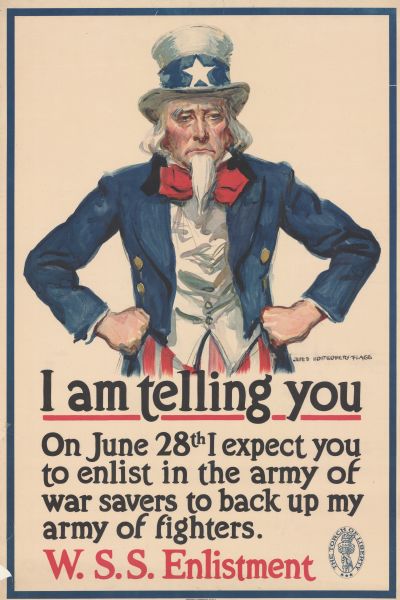
“I am telling you: on June 28th I expect you to enlist in the army of war savers to back up my army of fighters: W.S.S. enlistment.” Library of Congress, 1917.
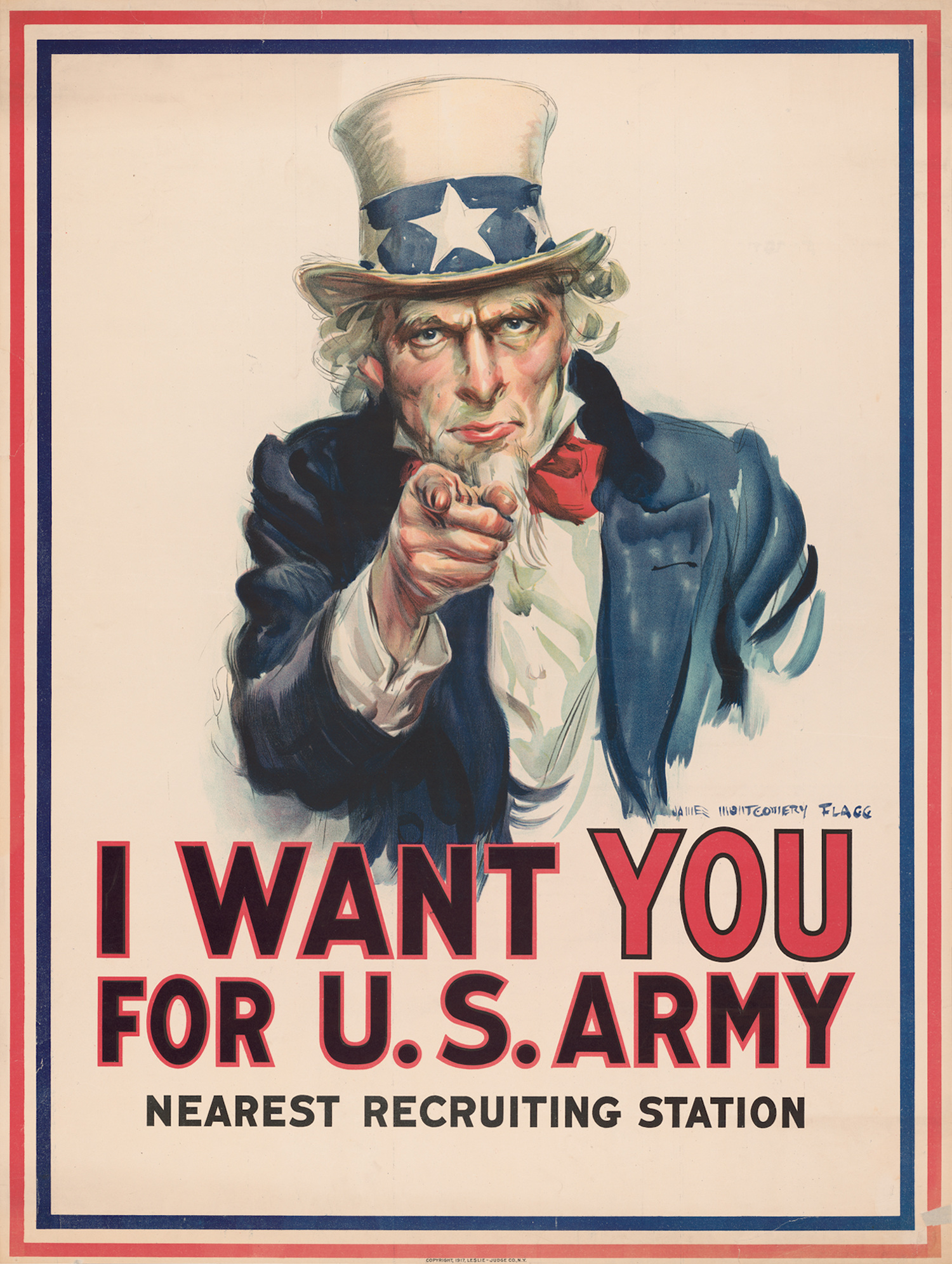
“I Want You for U.S. Army: nearest recruiting station.” Library of Congress, 1917.
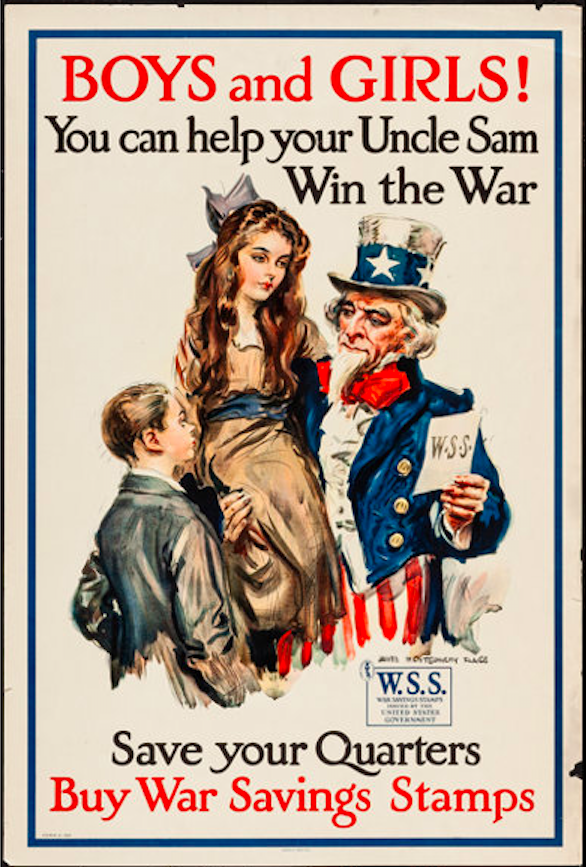
“Boys and Girls! You Can Help Your Uncle Sam Win the War - save your quarters, buy War Saving Stamps.” Library of Congress, 1917.
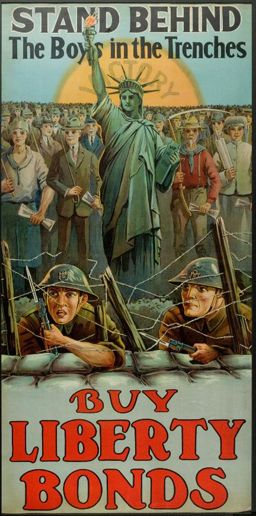
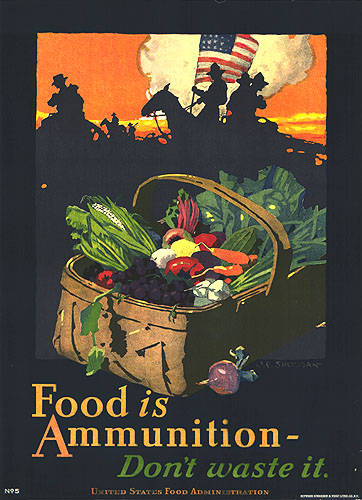
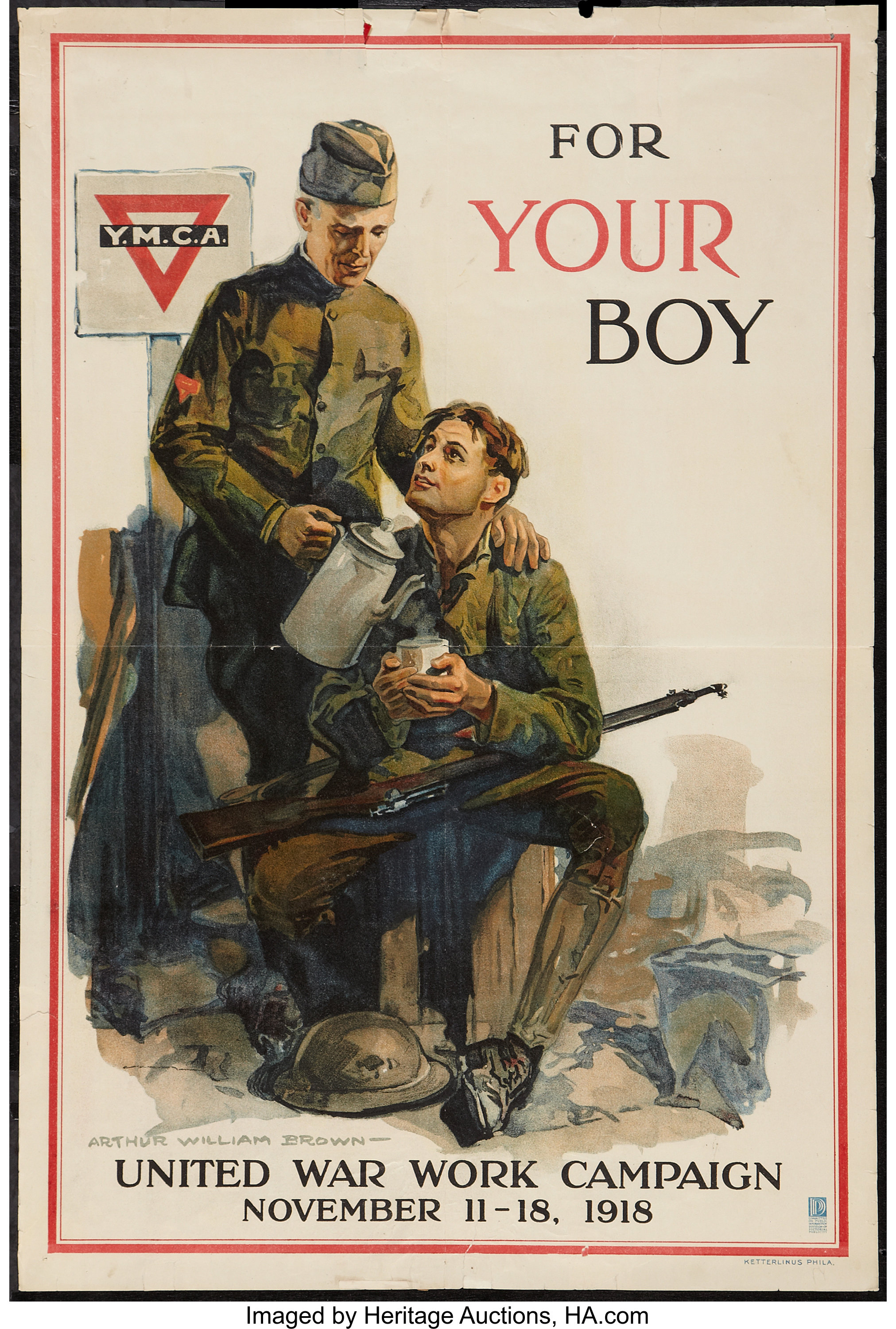
“Stand Behind the Boys in the Trenches—Buy Liberty Bonds." National Park Service, 1918.
“Food is ammunition- Don't waste it.” Temple University Digital Collections, ca. 1917-1918.
“YMCA For Your Boy.” IMA Museum. 1918.
This was the first large-scale visual ad campaign used to communicate messaging to Americans, with short slogans and bright colors to catch the eye.
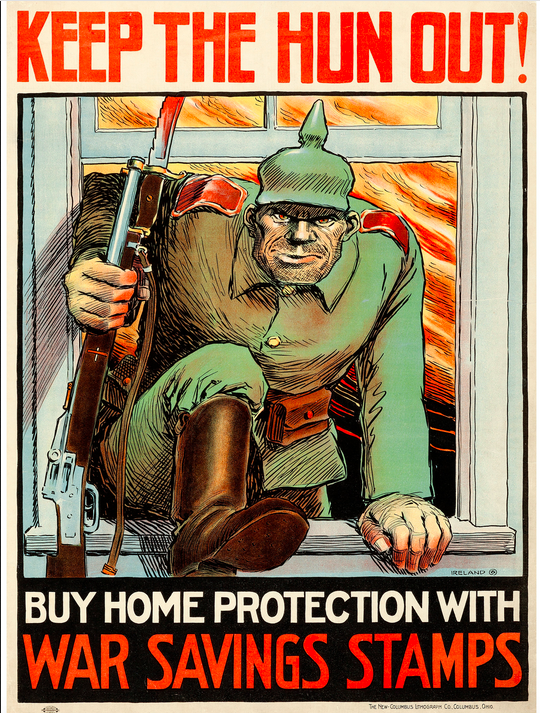
“Keep the Hun Out!” Ohio History Connection, 1918.
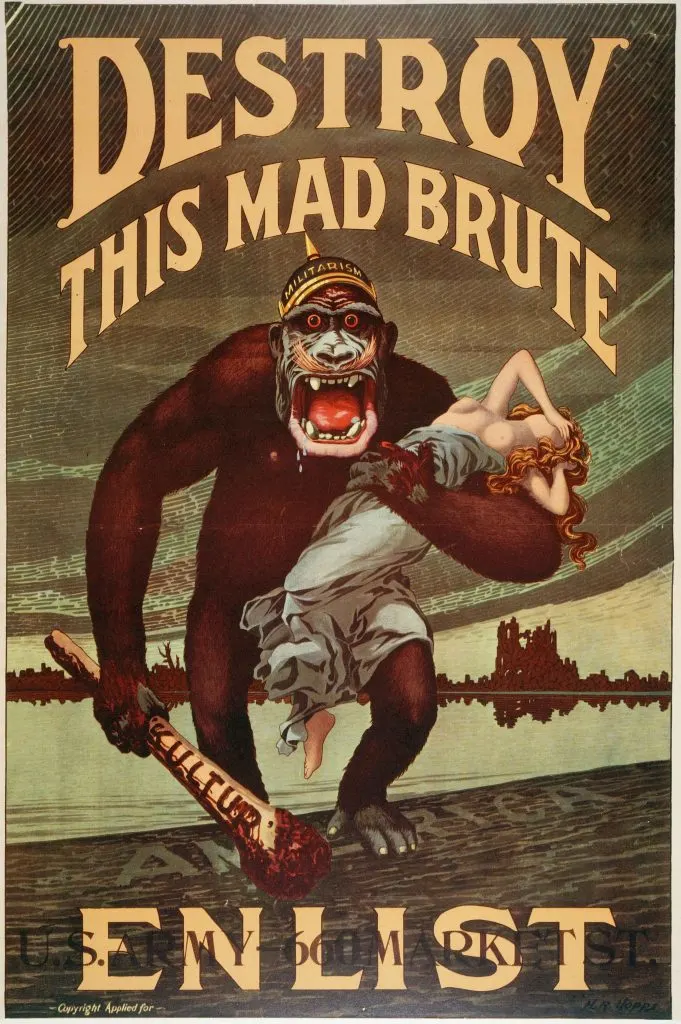
“Destroy this Mad Brute Enlist - U.S. Army.” Library of Congress, 1918.
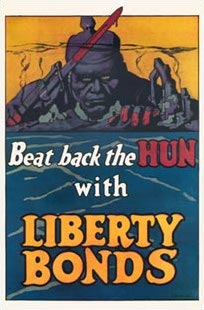
“Beat Back the Hun with Liberty Bonds.” Wikimedia Commons, 1918.
Header images:
a) Flagg, James Montgomery. “Sow the seeds of victory! Plant & raise your own vegetables.” Library of Congress, 1918.
b) Triedler, Adolph. “For Every Fighter, a Woman Worker. Care for Her Through the YWCA.” Metropolitan Museum of Art, 1918.
c) King, W.B. “Hold up your end! War fund week - one hundred million dollars.” Library of Congress, 1918.
[1] Creel, George. How We Advertised America. Harper and Brothers Publishers, 1920.
[2] Zieger, Robert H. America’s Great War: World War I and the American Experience. Rowman & Littlefield Publishers, Inc., 2000.